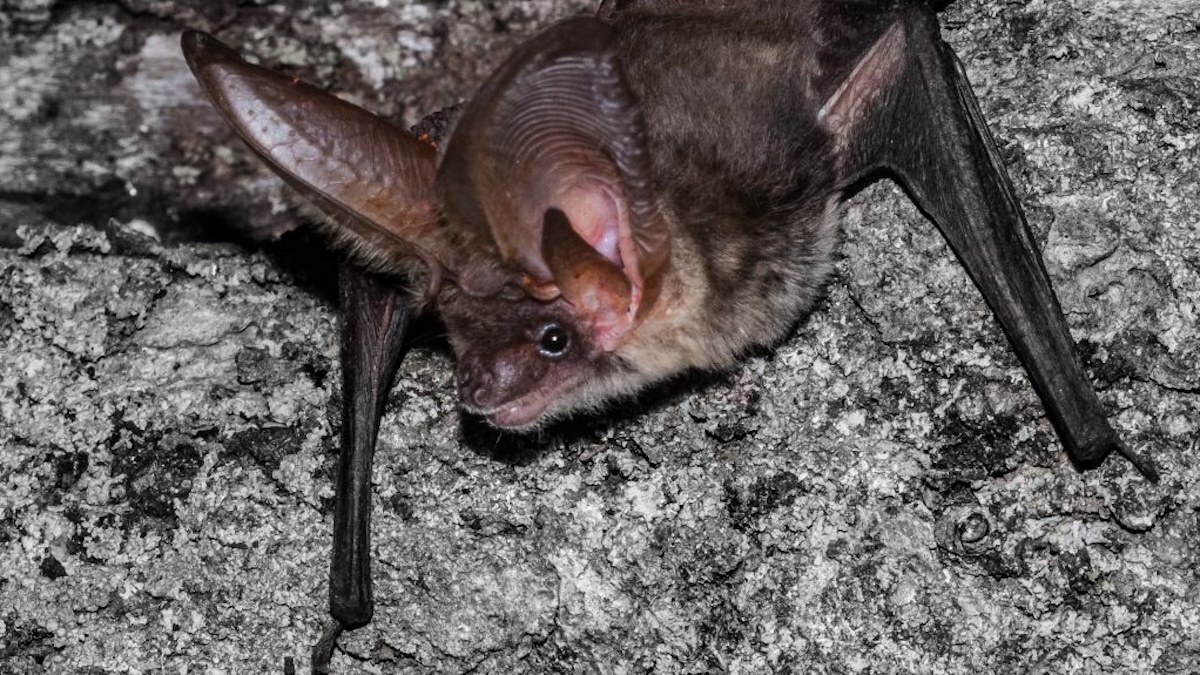Ecowatch
Despite Their ‘Bad Rap,’ Bats Can Help Farmers

A grey long-eared bat (Plecotus austriacus), one of the species that the study investigated. Adrià López-Baucells

Why you can trust us
Founded in 2005 as an Ohio-based environmental newspaper, EcoWatch is a digital platform dedicated to publishing quality, science-based content on environmental issues, causes, and solutions.
April 17 is International Bat Appreciation Day! In celebration of these sometimes unsung nocturnal pollinators, a new study has demonstrated how bats can be allies of agriculture, as they feed on important crop “pests.”
The researchers found that encouraging bats can be beneficial for conservation efforts, as well as local farmers, a press release from University of Oxford said.
“Bats often get a bad rap. Our study highlights their significance, revealing that while their nocturnal habits and secretive lifestyle make them elusive to many, insectivorous bats play a crucial role in the ecosystems they inhabit and, through the ecosystem services they provide, they can help humans in multiple ways,” said co-author of the study Dr. Ricardo Rocha, an associate professor in the biology department at University of Oxford, in the press release.
Because of bats’ ability to fly, they have colonized a variety of oceanic islands, including Portugal’s sub-tropical Madeira, and their presence has been beneficial for the island’s farmers.
About one-fifth of mammal species are bats. They play an especially vital role in island ecosystems, since these environments usually have much fewer mammals than mainland habitats. However, the diets of island-dwelling bats have traditionally been understudied.
The research team looked at three bat species living on the island of Madeira — the Madeira Lesser Noctule (Nyctalus leisleri verrucosus), the Madeira Pipistrelle (Pipistrellus maderensis) and the Grey Long-eared Bat (Plecotus austriacus).
The team collected droppings from more than 100 individual bats, then extracted DNA from their feces to determine what they were eating. The researchers found that the diets of all three bat species were highly diverse. They ate more than 50 distinct species between them, including flies, beetles, butterflies, moths and spiders. Of the identified species, 40 percent were either likely or confirmed forestry or agricultural pests.
“We anticipated that all three species would primarily feed on nocturnal butterflies; however, we did not expect that over 40% of the species detected in the bats’ diet are likely or confirmed agricultural or forestry pests,” said the study’s lead author Angelina Gonçalves of the University of Porto in Portugal in the press release.
The research team discovered that the bats consumed a well-known agricultural pest, the banana moth (Opogona sacchari), which impacts banana trees, an economically important local crop.
The bats also feasted upon insects such as golden twin-spot moths (Chrysodeixis chalcites) and turnip moths, who frequently damage cereals and vegetables. Bats also ate a human parasite called Psychoda albipennis, which causes urogenital myiasis, leading to burning sensations, abdominal pain and diarrhea.
The study, “A metabarcoding assessment of the diet of the insectivorous bats of Madeira Island, Macaronesia,” was published in the Journal of Mammalogy.
Collecting the bats was challenging for the researchers at first, as it involved the use of mist nets to capture and hold them until the collection of their fecal samples. Through their use of echolocation, the bats were initially able to easily avoid the nets.
“Fortunately, we discovered that the bats lowered their guard when they came to drink so we changed tactics slightly and waited at strategic water points,” Gonçalves explained. “In this way, we were then able to capture enough individuals to conduct our research.”
The expansion of agriculture is one of the biggest causes of biodiversity loss globally, but some species like bats are able to exploit its resources. The study shows that encouraging bats can benefit conservation while supporting island farming communities.
“An increasing number of farmers are using bat boxes to attract insectivorous bats to their fields,” Rocha said. “During our study, we experimented by placing some in the protected area where we were working, and to our excitement, some of these are now inhabited by the vulnerable Madeiran Pipistrelles. This suggests that deploying simple artificial bat roosts might lead to win-win outcomes for both conservation and local farmers.”
Subscribe to get exclusive updates in our daily newsletter!
By signing up, you agree to the Terms of Use and Privacy Policy & to receive electronic communications from EcoWatch Media Group, which may include marketing promotions, advertisements and sponsored content.
Source
Disclaimer: No copyright infringement intended. All rights and credits reserved to respective owner(s).












